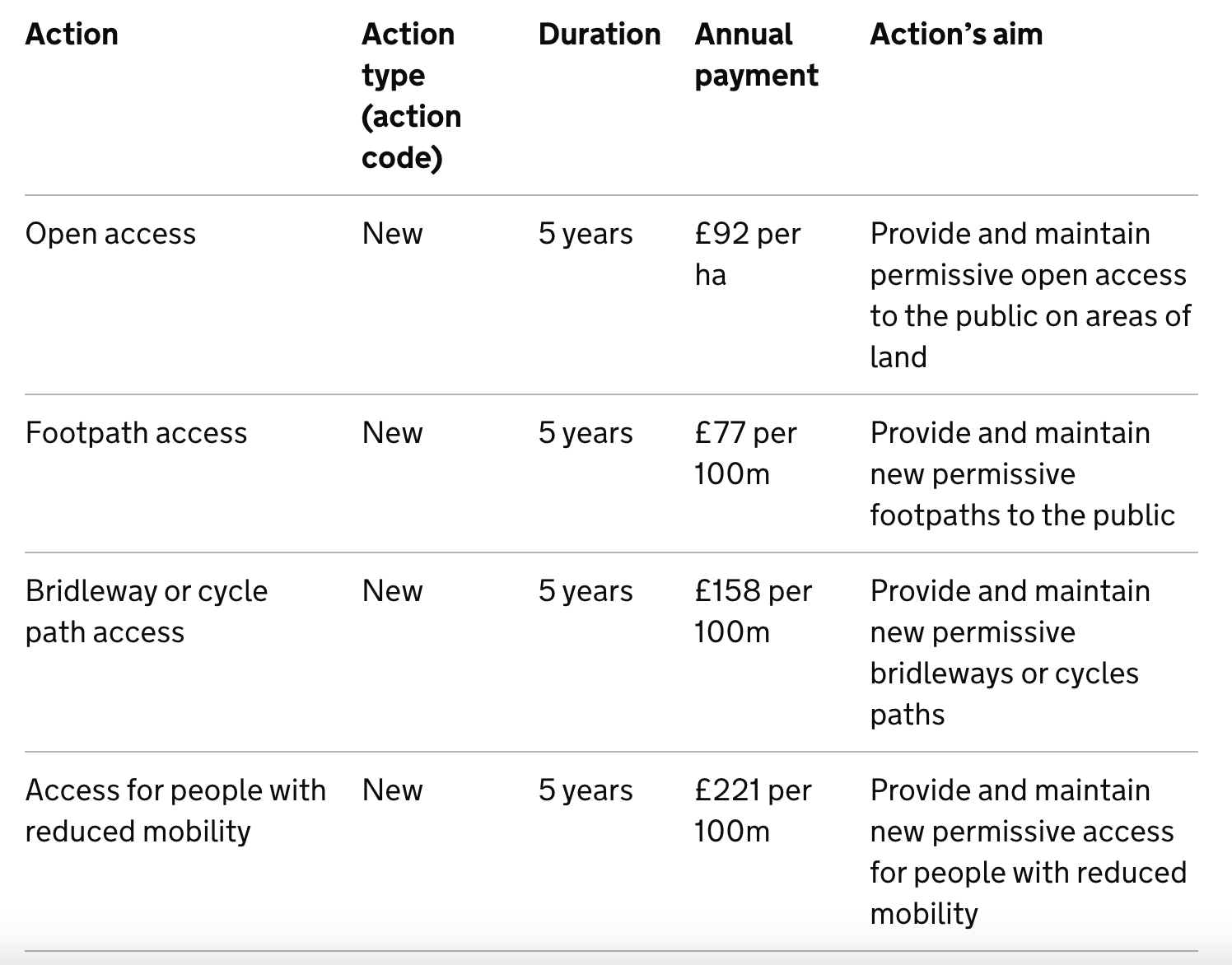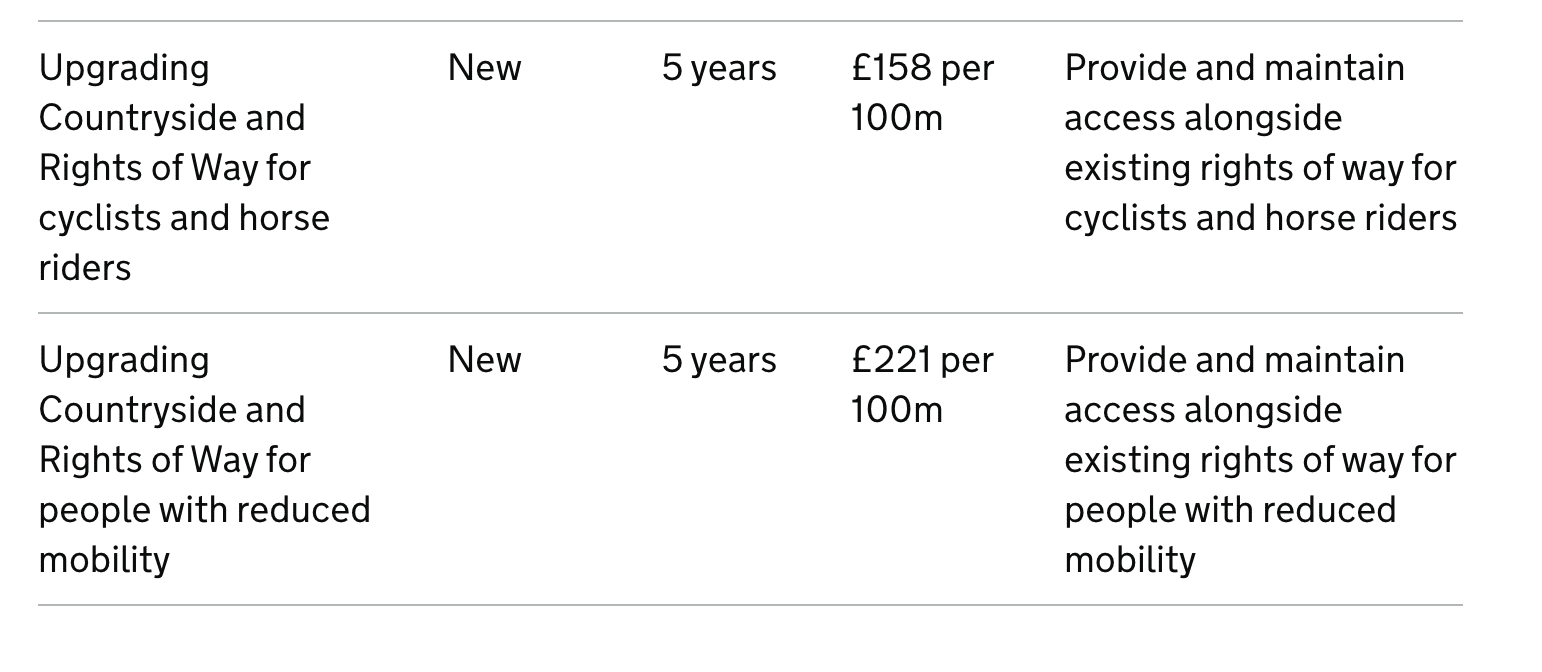What does a post Brexit agriculture policy have to do with mountain biking? Possibly, good things. Or, possibly not. To use that favourite term of politicians ‘the devil is in the detail’.
The Environmental Land Management update sets out how farmers and land managers will be paid for various actions, instead of the payments they received under the EU’s Common Agricultural Policy (CAP) . The new rules aim to incentivise responsible environmental stewardship as well as food production. This includes improved access to the countryside.
The new policy will subsidise the creation of new permissive routes, with different tiers of funding for different types of route. The funding available is quite a bit more than was possible under the CAP funding.


In a change from the existing policy, which also provides incentives for additional access, the new policy will also support ‘upgrading’ – intended to mean the changing of footpath to bridleway status.

Curiously, the rate of payment is the same whether you’re creating a new route, or upgrading an existing one.
There are two options which would attract £158 per 100m:
- ‘Provide and maintain new permissive bridleways or cycles paths’, and
- ‘Provide and maintain access alongside existing rights of way for cyclists and horse riders’
Given they both attract the same rate, I wondered what is the difference between the two, and contacted DEFRA for clarification, who said:
- Offer one applies to creating a new permissive route.
- Offer two applies when turning an existing footpath into a bridleway or cycle path.
- Offer two has been designed to recognise an ‘upgrade’ where there is already a right to walk but not to ride, so we ‘top up’ this existing right to more users.
- This can be alongside an existing right of way (a linear route with a precise definition recorded on official maps) or over any area where the Countryside and Rights of Way Act has deemed there is a right of Open Access (mountain, moor, heath and down, and common land and now the coast).
I also asked DEFRA: ‘Many historic routes are of a specific character and construction – the weathering and potential rough surface of which may be part of the attraction for many users. Particularly in these circumstances, maintenance needs to be sympathetic and often not the quickest/cheapest fix. How will the new scheme avoid incentivising that sterilisation of trails under the guise of ‘maintenance’, or the pursuit of payments for the lowest possible outlay?’
I did not get a direct answer, but instead was told:
The range of access offers will deliver increased public benefits through added opportunity to engage with the natural environment. As well as offering an inherent benefit enabling people to access our green spaces, in some locations, new permissive access can also be used to help connect into existing permanent rights of way, offering additional value to the public.
The technical annex for the policy states ‘Ahead of this, we will work with farmers, land managers and the wider sector to finalise the details. This will help us ensure the offer helps to maintain a resilient, productive agricultural sector that will deliver our ambitious environmental and climate goals alongside food production.’ I wondered how the outdoor community could engage with this process to ensure the access incentives work to preserve the activities and attractions of the existing rights of way network, and was told:
- We are currently drafting the detail for delivery of these actions.
- Our initial discussions have explored how we can work with local organisations, such as parish councils, to help promote and support new permissive access actions. We are continuing to develop these discussions.
On the face of it, there doesn’t seem to be much incentive to go for the whole new permissive option rather than ‘upgrading’ an existing one. And of course, while ‘upgrading’ may be intended to mean the legal designation ‘upgrading’ from footpath to bridleway, it does rather come with it the associations of sterilisation, hardcore, and other ‘upgrading’ or ‘maintenance’ treatments so often done unsympathetically. As many of us know, there are plenty of footpaths out there that need nothing more than a change of legal designation – the physical presence on the ground is already perfectly adequate for many purposes. And of course this perpetuates the concepts of footpath vs bridleway, and permissive rights vs actual rights. And how long must a permissive route remain in place after the payments have been made? All in all, it seems that some careful consultation, definitions, and processes will be needed to make the new scheme work as intended.

The introduction of accessible routes will be another area that needs careful implementation – it makes no mention of cycling here, but surely such routes could also be useful for cycling – particularly of the family flavour with wobbly young riders who tend to veer off at alarming directions. It would be great to see the countryside made more accessible, but again, such treatments should be appropriate to the setting.
With so much potential to do good – but equally as many potential pitfalls – it seems like an ideal area for Cycling UK to help DEFRA shape the guidance. Sophie Gordon, Cycling UK off-road campaigns officer said:
“On the face of it, this is announcement is good news for off-road riders. Cycling UK, along with the British Horse Society, have lobbied hard behind the scenes to make sure access for our communities is recognised – and this funding confirms we’ve been listened to.
“Is it perfect? No. We wanted to see funding to incentivise new permanent rights of way, not just permissive access.
“It’s also not clear how much funding will be available, but it’s not likely to be a blank cheque for all landowners. Making sure the money is spent where it will bring greatest benefit will be crucial to the scheme’s success.
“There’s plenty to build upon to improve access in England with this news, which Cycling UK will look to take up with future governments.”
Fingers crossed and watch this space.
Join our mailing list to receive Singletrack editorial wisdom directly in your inbox.
Each newsletter is headed up by an exclusive editorial from our team and includes stories and news you don’t want to miss.
BETTER THAN HALF PRICE
Better than half price deals →






